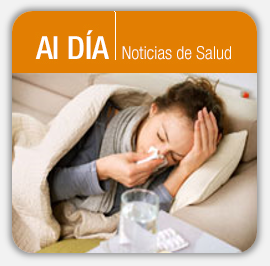Dan a conocer guía sobre H1N1 para escuelas hasta grado doce
La secretaria de salud dio a conocer hoy una guía sobre el H1N1, conocido también como virus de la influenza porcina, en un esfuerzo para que tanto niños como profesores se mantengan sanos y libres de influenza en este curso escolar.
“El mensaje más importante para los padres es que los niños enfermos no deben ir a la escuela. Lo mismo es aplicable a profesores y resto del personal. Si usted está enfermo, el mejor lugar para estar es la casa,” dijo la secretaria de salud Everette James.
“Las escuelas en Pensilvania deben dar pasos para prepararse para la influenza porcina este otoño e invierno ya que el virus ha tenido un impacto significativo en niños desde los 5 hasta los 19 años. La guía brinda recomendaciones para mitigar el impacto de la influenza en las escuelas así como para limitar la propagación una vez que la influenza haya sido identificada entre los estudiantes o el personal docente”, añadió James.
http://www.medicalnewstoday.com/articles/160910.php
The department’s guidance is compatible with recently released recommendations from the Centers for Disease Control and Prevention (CDC). The guidance is meant to limit the spread of influenza while reducing disruption to schools.
Hand washing, cough etiquette and keeping the environment clean can also significantly help reduce the spread of disease.
The Department of Health is recommending that those who are sick with influenza-like illness should stay home for at least 24 hours after they no longer have a fever and are no longer taking medication to reduce the fever. In most cases of flu, this means three to five days after the onset of illness.
The Department of Health strongly encourages school districts to work closely with local or state health officials to determine the best course of action should an outbreak happen.
The departments of Health and Education are holding a series of webinars with school districts across the state to talk about the new school guidance and to share what is expected this coming school year.
“We will work closely with schools and child care facilities to help them be on the lookout for children showing signs of influenza and have appropriate response measures in place,” Education Secretary Gerald Zahorchak said. “School district officials should also maintain close contact with their local health departments and make every effort to share flu prevention information to families.”
Symptoms of the new influenza virus are similar to those of regular or seasonal flu and include sudden fever and cough with muscle aches, fatigue, and lack of appetite. Many people with this infection also have runny nose, sore throat, and watery eyes, and some also have nausea, vomiting and diarrhea.
Individuals with the flu are contagious to others. It is important to take the following steps to prevent spreading the virus to others:
— Stay home when you are sick to avoid spreading illness to others;
— Cough or sneeze into the bend of your elbow or a tissue and properly dispose of used tissues;
— Wash your hands frequently and thoroughly with soap and warm water or use an alcohol-based hand sanitizer;
— Avoid touching your eyes, nose and mouth;
— Stay healthy by eating a balanced diet, drinking plenty of water and getting plenty of rest and exercise; and
— Seek care if you have influenza-like illness.
The Department of Health will continue to provide guidance to parents and the schools, including information on the development and availability of the Novel H1N1 flu vaccine, as the influenza season progresses.
Publicado: ago 19th, 2009. ![]()










